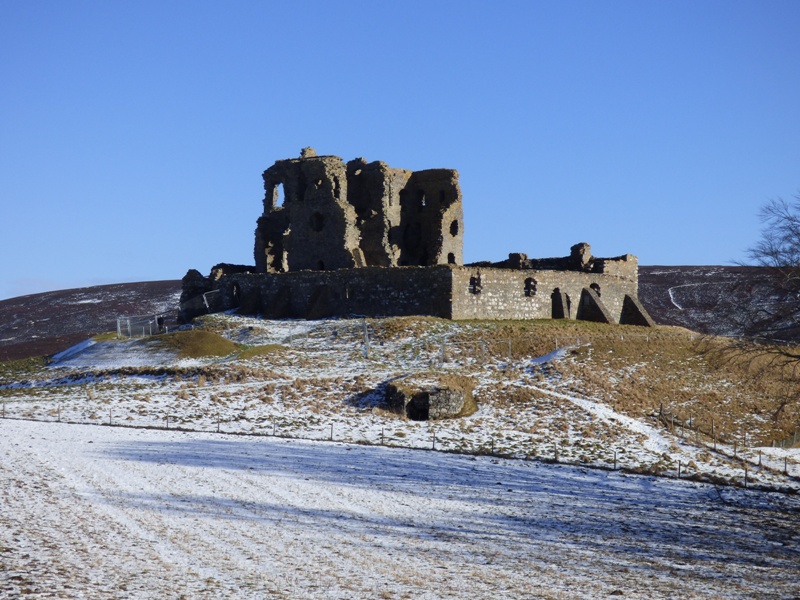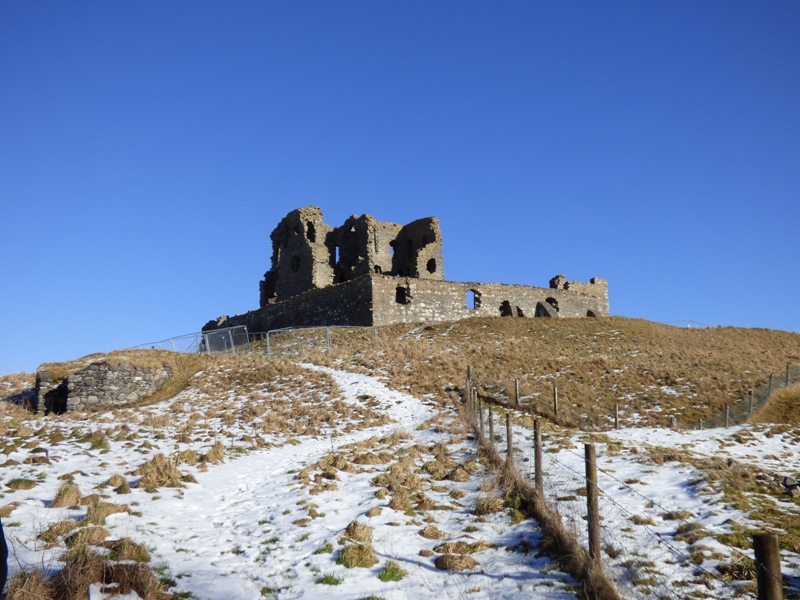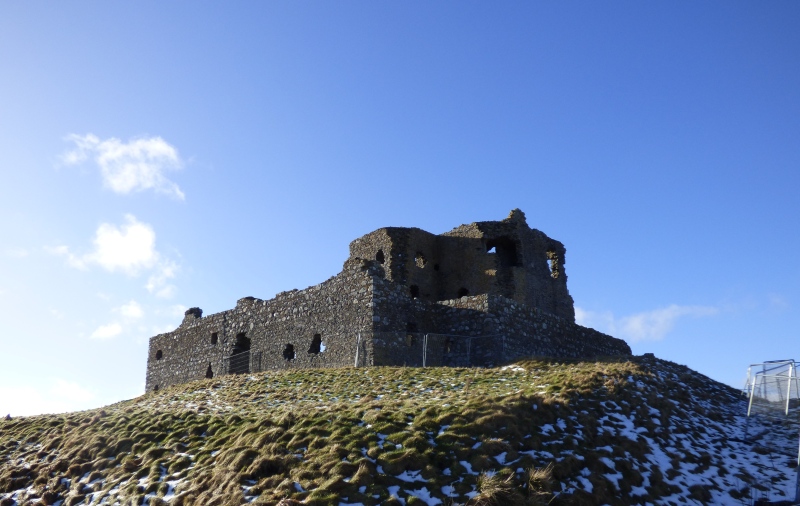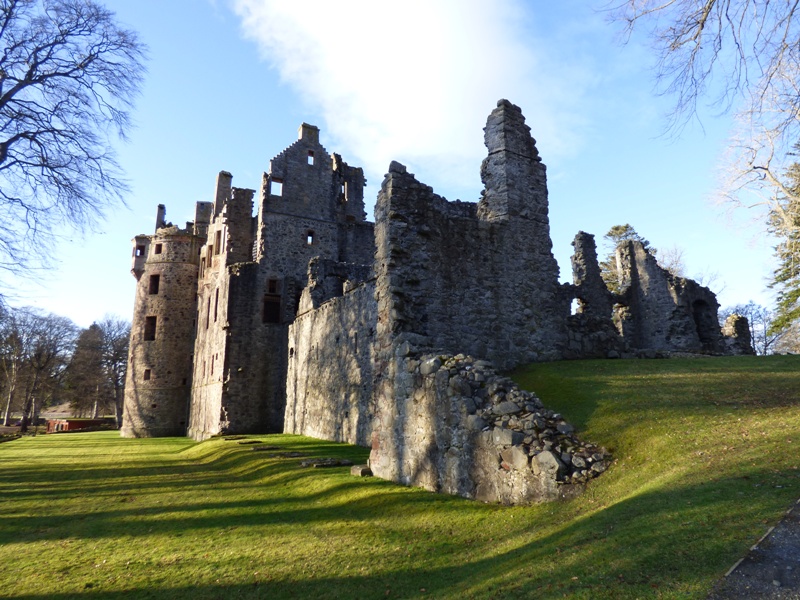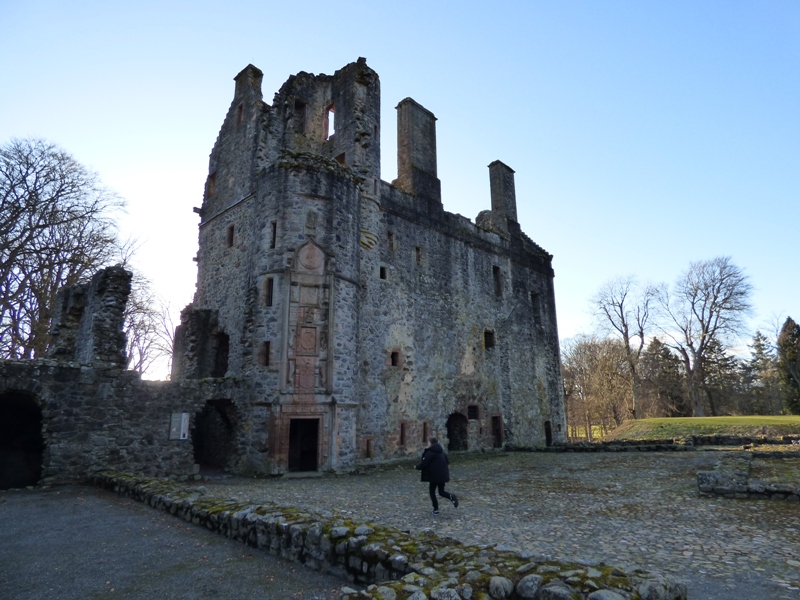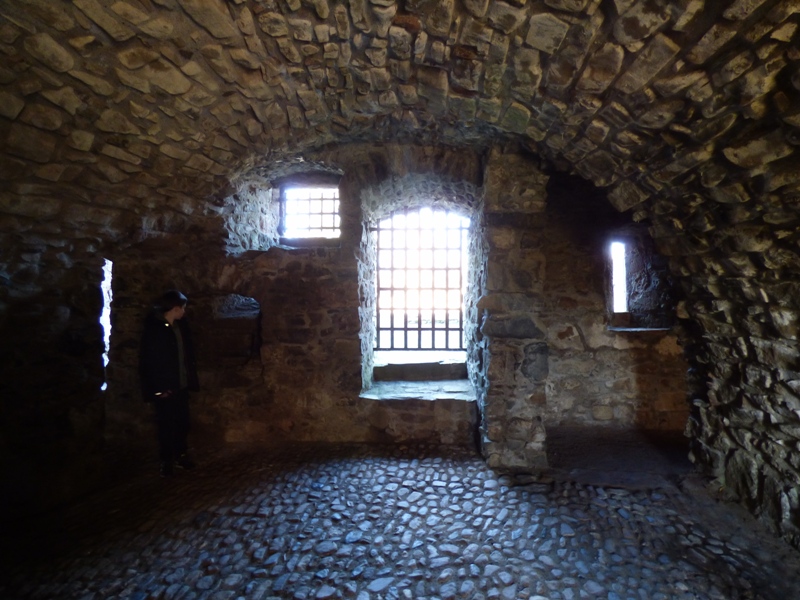Scotland Travel Blog February 2024
”Game of Thrones Scottish Style”
Scotland’s history is a multi-layered and complex subject. It’s not something that my Generation got taught about at school. Instead of learning about the Lord of the Isles, we got the Spanish Armada. And we covered the Battle of Hastings in considerably more detail than the Battle of Bannockburn where Robert the Bruce inflicted a crushing defeat on the invading English.
Most of my understanding of Scottish history has been built up over the years by visiting historical places, which then piqued my interest to learn more. But the more I learn about Scotland’s history the more I realise that it’s not a subject that can be condensed into something simple to explain to a school kid.
This became apparent when I tried to educate my son about the politics and rivalries between the competing Earldoms that fought for control of the Moray / Aberdeenshire area.
He’s a tolerant kid and doesn’t complain too much when Dad drags him up hills, or through forests to explore heaps of old stones. I try to keep him engaged by recounting stories (especially ones of gruesome deeds) about the places we go to. But sometimes the plots get so complicated that it would be helpful to have one of those charts like you see in TV detective shows with all the suspects pinned on a board with bits of red string linking the evidence.
So whilst it’s still fresh in my head, I’m going to tell you a little bit about the history of Moray, the powerful families that fought over it, and the castles that they built. There are no dragons or whitewalkers involved in these stories, but you get a good dose of murder, treachery, and a wee bit of the supernatural.
The Earldom of Moray:
Moray is an area in the Northeast corner of Scotland, next door to Aberdeenshire. It is a region that invading English armies seldom penetrated so it was a relatively safe area for Robert the Bruce to retreat to and regroup during the Scottish Wars of Independence.
Robert recognised the importance of Moray and made his loyal nephew, Thomas Randolph, the 1st Earl of Moray in 1312. That’s two years before the Battle of Bannockburn where Thomas distinguished himself by leading one of the Scottish schiltrons in an attack that prevented the English Cavalry from flanking the Scots. Thomas is also famous as the guy who captured Edinburgh castle from the English by scaling the cliffs of the castle rock.
So Thomas, the 1st Earl of Moray, was a bit of a dude. Exactly the kind of guy you want to have by your side in a battle, or when you’re campaigning to be King of a country where not everyone is on your side. And Bruce had made some enemies after he bumped off John Comyn, his rival to the throne.
Thomas ruled the Moray area until his death in 1332. His title then fell to his eldest son, Thomas Randolph the 2nd Earl of Moray, but he followed his dad to the grave in a matter of weeks after carelessly getting killed in the Battle of Duplin moor. That was a battle between the current King of Scotland (Robert the Bruce’s son David) and a guy called Baliol who thought he had a claim to be King of Scotland. But that’s a whole other story….
By now we’re on to the 3rd Earl of Moray, John Randolph. He led an eventful life and spent quite a few years as a prisoner in England, but he managed to hold onto his title as Earl of Moray until dying in 1346. Like his brother, he also died in battle against the English.
Unfortunately, John Randolph died childless, and this created a power vacuum in Moray with the result that several powerful families vied with each other for control of the land. This in turn led to the building of some impressive castle strongholds which I’m going to tell you about.
Balvenie Castle:
Balvenie Castle stands on a small hill just north of Dufftown and is right next door to the famous Glenfiddich distillery. But the castle is hidden by mature trees, so it’s quite easy to visit Glenfiddich and not even realise there’s a surprisingly large fortress next door. As you might expect, Balvenie Distillery is also just a short walk away.
The curtain wall and outer ditch, which you can still see today, are the remains of the 13th century Mortlach castle. Mortlach was the name of the original castle built on this site by the Comyns, remember them? They were rivals of Robert the Bruce, so Robert got rid of them and gave the Comyn’s lands to his good pal the “Black Douglas”.
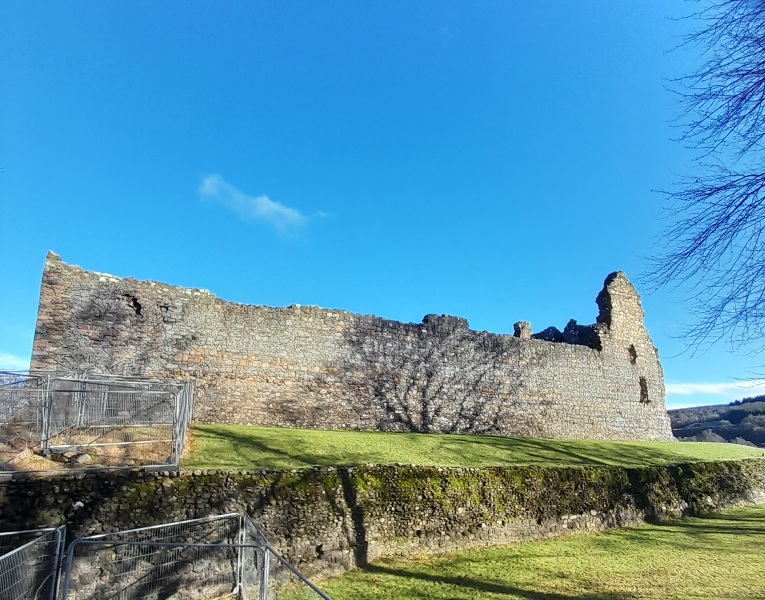
The Black Douglas family then acquired Balvenie Castle sometime in 1362, but fast forward to 1455 and the Black Douglas family had become a bit too powerful for the liking of the Scottish King, James II. This led to a civil war with King James whose army defeated the Douglases at the Battle of Arkinholm, and so ended the Douglas family’s ownership at Balvenie.
James II then gave the castle to his half-brother, John Stewart the Earl of Atholl. In a twist worthy of “Game of Thrones”, John was married to a lady called Margaret “The Fair Maid of Galloway”. She had also been married to the 8th and 9th Earls of Douglas who both died at the hands of her new husband’s half-brother. It must have been tense at Balvenie when the in-laws visited.
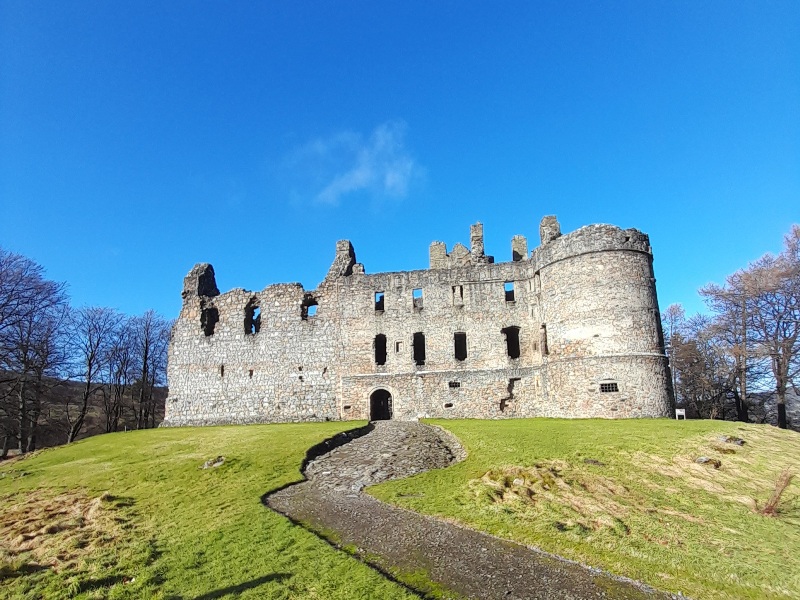
Curiously, there was an agreement that John Stewart paid a rental to King James for the use of Balvenie Castle. But the annual payment was a single red rose. Honestly, you couldn’t make this stuff up.
The cheap rental agreement did allow the Stewarts to invest in some home improvements, and it was during their residency that the castle gained the “Atholl Lodgings” with its impressive four-storey L-plan tower that dominates the southern wall of the courtyard.
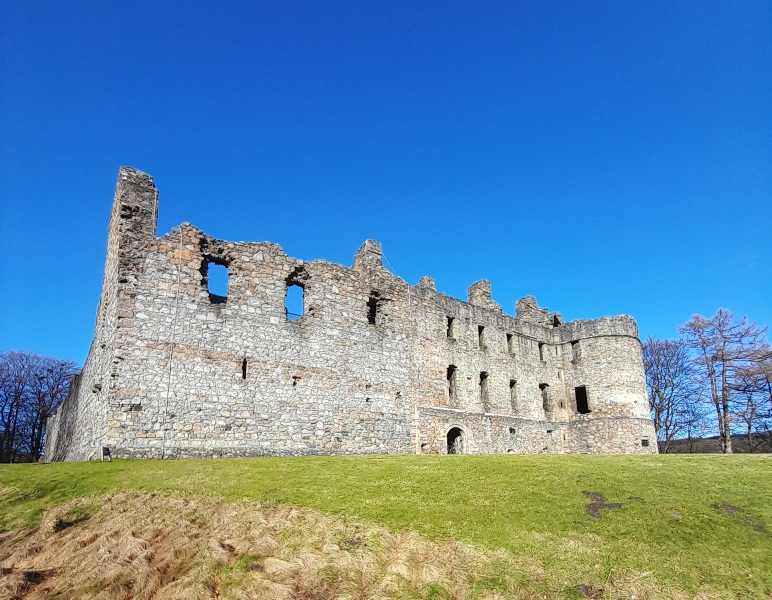
By the early 1700s, the castle was in the ownership of the Innes family. The Innes family weren’t particularly powerful, or rich and the castle gradually fell into disrepair. By the time of Culloden, it was already roofless and of little military use. Although now in the care of Historic Environment Scotland, the castle is technically still owned by the descendants of the Innes family.
If you are considering a visit to Balvenie, we need to warn you that it has a few ghosts. The most famous is the “White Lady” who wanders through the courtyard. And, as recently as 1994, there were sightings reported of 2 ghostly horses accompanied by a groom. I’m not aware of any folklore to explain who the ghosts might be, but please let us know if you see anything when you visit.
Auchindoon Castle:
Auchindoun Castle lies just 3 miles to the southeast of Balvenie Castle, but it feels quite isolated as it stands on a barren hilltop surrounded by rolling fields and open farmland. There is a farmhouse nearby (now operating as a holiday home), but the surroundings would otherwise appear little changed since the 15th century when the castle was built.
The Castle was originally built for John Stewart, AKA the Earl of Mar, who was the youngest son of James II. As you might recall, James II had issues with the Black Douglases who lived up the road at Balvenie and had confiscated their lands in Moray in 1455 after beating them in battle.
John Stewart didn’t get on with his elder brother James III, who became King of Scotland in 1460. It is speculated that John was jealous of his older brother, and probably felt that he could do a better job of being King. James III was certainly not a popular monarch and had lots of enemies in the Scottish Parliament who disliked him for being too pally with the English. James III was by all accounts quite incompetent as a King, but he did have a knack for disposing of anyone that might threaten his reign, and he didn’t worry if they were family or not. Consequently, John found himself accused of witchcraft and was locked up in Craigmillar Castle where he had a mysterious fatal accident….hmmm?
After bumping off his brother, James III decided to give Auchindoun to one of his best pals, Thomas Cochrane, who was a master stone mason and thus very handy at DIY. Robert is credited with the construction of most of the castle sections that remain today. And it must have been quite a comfortable place to live with a tower where Robert had his private residences, a commodious wine cellar, kitchen block, and brewhouse. It sounds like he knew how to throw a party.
Thomas Cochrane didn’t get to enjoy his country home for long as his close relationship with an unpopular King put a target on his back. Just 3 years after getting the keys to Auchindoun Castle, Thomas was captured and executed by a group of Noblemen who were plotting to remove James III from the throne.
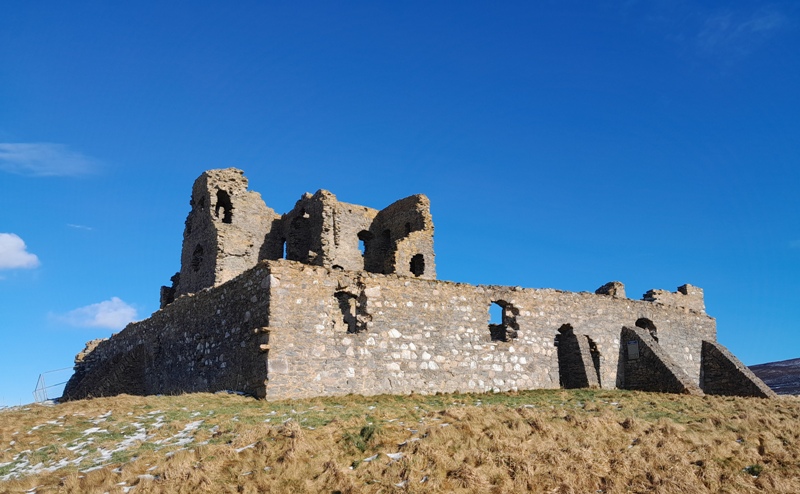
James III eventually met his end in 1488 at the Battle of Sauchieburn near Stirling. Accounts of his death vary, but there’s evidence to suggest that it might have been his 15 year-old son, James IV, who finished him off. One of the reasons for this speculation is that James IV always wore a heavy steel chain around his waist and it is speculated that this was an act of penance for his father’s murder.
The castle was on the receiving end of several conflicts with neighboring families and was torched a couple of times in the 16th and 17th centuries. By the early 1700s, it was already a ruin and was being used as a source of building materials for nearby farms.
If you are visiting Auchindoun you need to wear some decent footwear as there is a bit of a hike along a farmtrack, and across a field to get to the ruins. The road that leads up to the car park for the castle is also not much more than a farm track and it’s quite steep in places. When we visited in February, the road was too icy to drive a car up.
Please also note that the castle is currently out of bounds whilst restoration work is done to the masonry. You can walk up to the castle and view it through a perimeter fence, but access to the inner courtyard is not possible for safety reasons.
.jpg)
Huntly Castle:
The last castle I’m going to bore tell you about is Huntly castle, which is also my favourite in this region.
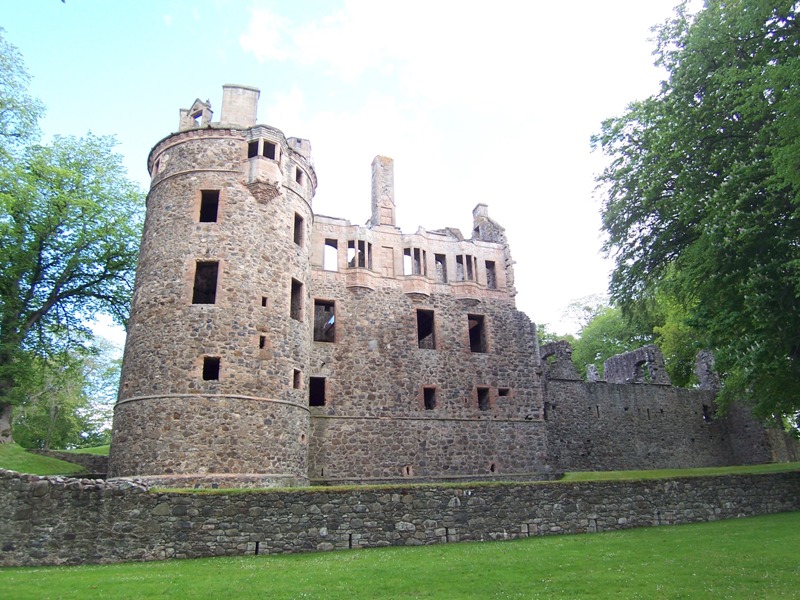
It is a particularly striking castle with lots of fancy Renaissance features and fine masonry work in its upper storeys.
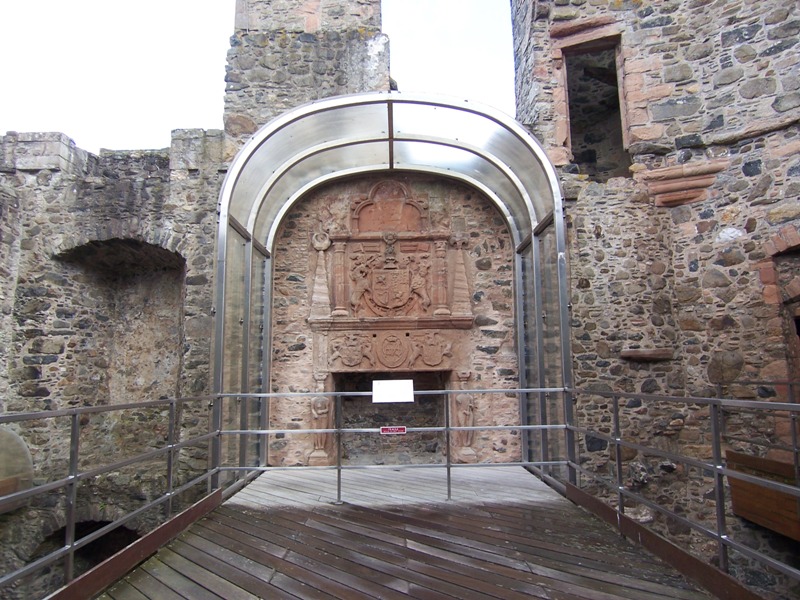
Huntly Castle stands on the edges of a small town with the same name. But the original castle on this site was called Strathbogie, which is not a nice sounding name so it was changed to Huntly in 1506.
The castle has been a seat of Clan Gordon since 1314, when it was gifted to Sir Adam Gordon of Huntly as a reward from Robert the Bruce for his loyal services. The previous owners backed the wrong side at Bannockburn, and so forfeited their lands as punishment.
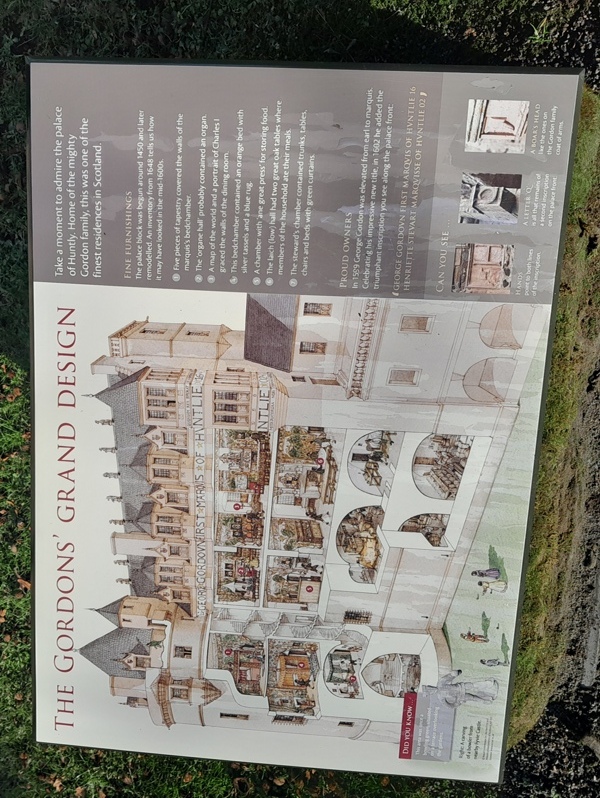
The Gordons became one of the most powerful families in this area of Aberdeenshire, and they had good connections in high places as witnessed by the fact that King James IV was a frequent visitor (remember James IV, he’s the kid that killed his Dad… allegedly). A distinctive feature of the castle is an ornately carved frontispiece above the main entrance to Gordon family's main residence. This elaborate piece of stonemasonry was all about impressing upon visitors that the Gordon's had power and staus.
.jpg)
Being a powerful family brought its problems and the Earls of Huntly seem to have been a singularly unlucky bunch.
The 4th Earl fell foul of Mary Queen of Scots, which wasn’t hard as she seems to have been quite a difficult person for anyone to get along with. So, the Earl found himself caught up in a battle with the Queen which he quickly lost and was taken prisoner. By all accounts, the Earl was so vexed about being captured that he promptly dropped dead.
But death wasn’t the end of the 4th Earl’s problems. Mary had his corpse disemboweled, salted, and pickled before being shipped down to Edinburgh. Then, seven months after he died, his pickled corpse was wheeled out and put on trial for treason in the Scottish Parliament. Unsurprisingly, he didn’t put up much of a case in his defence.
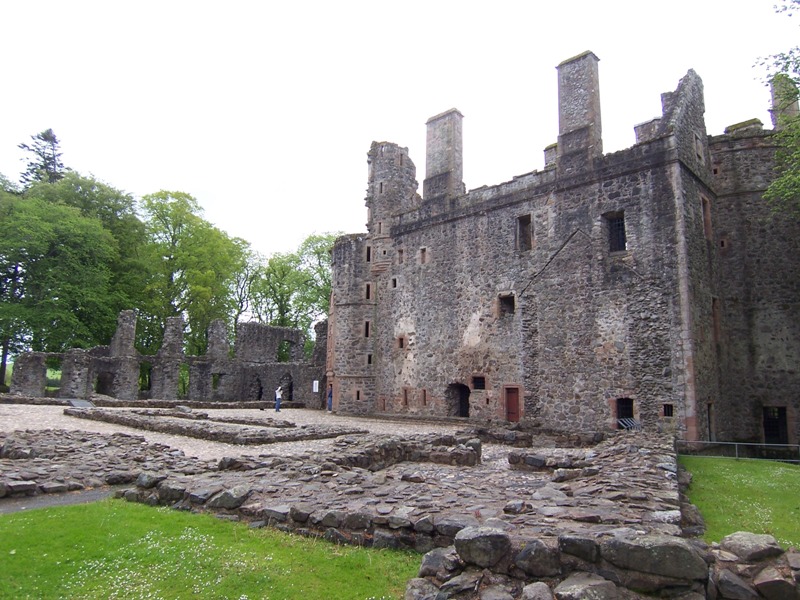
The 5th Earl died of a stroke during a game of football at the castle.
The 6th Earl led a revolt against King James VI, which annoyed the King a bit so he had bits of the castle knocked down.
The castle was rebuilt after James VI’s visit, but it had ceased to be used as a Clan Gordon residence by the time of the 1745 Jacobite rebellion. The castle did remain in the ownership of the Gordon family until the 1920’s, but it is now in the care of Historic Environment Scotland and is well worth a visit.
That's just a summary of all the shenanigans that went on in one small corner of Scotland. As you can see, Scotland's history gets very complicated.

